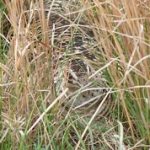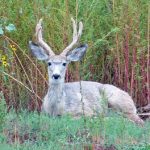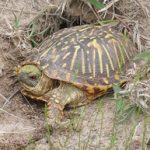The Nebraska Sandhills: 2012-2015
STCP’s Prairie Grouse Research Project in Nebraska’s Sandhills
Until now, there has never been a year-round study of the ecology of the greater prairie-chicken in the core of the range where populations are associated with vast expanses of native grassland habitat. Nebraska, and specifically the Sandhills region with its estimated 32 million acres of grasslands is the last best place to undertake such a study.
In a unanimous vote at its annual meeting in December 2011, STCP committed to funding the field research necessary to determine the factors that contribute to maintaining what is likely the largest remaining population of greater prairie-chickens in North America.
Year-Round Ecology of the Greater Prairie Chicken in Native Habitat: The Sandhills of Nebraska, 2012-2015
In 2012, after a half century of conservation efforts on the behalf of the Greater prairie-chicken the question for Society of Tympanuchus Cupido Pinnatus, Ltd. is what needs to be done to honor it’s mission “to save the prairie-chicken from extinction” and serve the long term interests of the species.
The first step in using good science to solve wildlife management problems is to have an understanding of what is normal. Thirty-two years ago Robel (1980) in discussing the needs for prairie grouse indicated: “Good prairie grouse populations with stable habitats of high quality cause ambivalence in research divisions of state game agencies. With plenty of grouse to hunt, why worry about doing much biologically-oriented research as long as the grouse populations hold up. Such an attitude results in little research being conducted in the central portions of the grouse range, the very place where research should be conducted to understand the basic biology of the prairie grouse populations. Much research needs to be done before we can scientifically manage prairie grouse populations.”
These statements are still valid today. There has yet to be a year-round study of the ecology of the greater prairie-chicken in the core of the range where populations are associated with large expanses of native grassland habitat. It is ironic that with all the research done on the greater prairie-chicken in 75 years, the single dominant question that remains is what is normal?
In a unanimous vote at its annual meeting in December 2011, STCP committed to answering this question and in March 2012 we began a 3+ year research project in the Sandhills of Nebraska – perhaps the last, best place to study a large, viable prairie-chicken population in vast expanses of native grassland habitat.
Our research will study the ecology of the greater prairie-chicken in an approach similar to that undertaken with Prairie Chickens & Grasslands: 2000 and Beyond (Toepfer 2003). The information gathered will provide baseline data on survival and reproductive parameters to compare with populations elsewhere that may be in decline or in jeopardy. The nature and length of this project is such that there will be numerous opportunities to mesh the effort and results with other ongoing prairie-chicken research projects in Minnesota, and Texas.
General objectives of our research will be to use radio telemetry to determine survival, habitat use, nest parameters, productivity and dispersal of young.
On ranches near Bassett, Nebraska, adult prairie chickens will be captured on booming grounds in the spring using walk-in funnel traps and during the winter using drop nets. Chicks and young of the year will be captured during the summer via night-lighting. Captured birds will be radio-marked and general telemetry techniques and analysis will follow those used on prairie-chickens in contemporary and earlier studies by the author and associates.
All too often wildlife research is only initiated when problems arise in effort to identify causes and prescribe fixes. STCP has addressed issues like this for many years and realize now that the most important research focus for the future of prairie grouse is to determine what actually works in the best remaining native habitat. Assembling a detailed picture of all the elements in play for a stable or increasing population of prairie grouse will provide more long-term, valuable information than determining all the fixes for populations in decline throughout the range.
Our new focus in the Sandhills of Nebraska will be the first important study aimed at answering the question, “What is normal”? The outcome could provide answers that will help insure a secure future for prairie-chickens and other prairie grouse.
In addition to being one of the last best places for prairie-chickens, the Sandhills are an important home for many additional resident and migratory species. Upland Plover, Blue-winged teal, Common Nighthawk, Leopard frog, Pronghorn antelope, Ornate box turtle, White-tailed jackrabbit, Mule deer, Wild turkeys. Images by John Toepfer & Greg Septon
 Bill Vodehnal has been a wildlife biologist for Nebraska Game and Parks Commission (NGPC) since 1982 focusing on prairie grouse management, research and habitat development on private and public lands. He also serves as the liaison between NGPC and US Forest Service, farm bill implementation, and outreach. Bill is best known for coordinating "A Grassland Conservation Plan for Prairie Grouse" which addresses the threats and conservation strategies to conserve grassland habitat for lesser and greater prairie-chickens and sharp-tailed grouse in the Great Plains. Bill has been an invaluable asset and supporter of STCP’s current research project in the Nebraska Sandhills.
Bill Vodehnal has been a wildlife biologist for Nebraska Game and Parks Commission (NGPC) since 1982 focusing on prairie grouse management, research and habitat development on private and public lands. He also serves as the liaison between NGPC and US Forest Service, farm bill implementation, and outreach. Bill is best known for coordinating "A Grassland Conservation Plan for Prairie Grouse" which addresses the threats and conservation strategies to conserve grassland habitat for lesser and greater prairie-chickens and sharp-tailed grouse in the Great Plains. Bill has been an invaluable asset and supporter of STCP’s current research project in the Nebraska Sandhills. The Nebraska trapping crew - L to R
Tim Baker - Undergraduate student at University of MN, Crookston
Terry Wolfe - Retired MN DNR Wildlife Biologist, Crookston, MN
Krista Kenyon - Canadian Undergraduate student, at University of MN
Perre Kerch - Artist, Ripon, WI
Matt Rethaber - Photographer, Milwaukee, WI
Gary Huschle - Retired USFWS Wildlife Biologist, Leonard, MN
The Nebraska trapping crew - L to R
Tim Baker - Undergraduate student at University of MN, Crookston
Terry Wolfe - Retired MN DNR Wildlife Biologist, Crookston, MN
Krista Kenyon - Canadian Undergraduate student, at University of MN
Perre Kerch - Artist, Ripon, WI
Matt Rethaber - Photographer, Milwaukee, WI
Gary Huschle - Retired USFWS Wildlife Biologist, Leonard, MN
NE PROGRESS REPORT 1: March 24, 2012
NE PROGRESS REPORT 2: May 6, 2012
NE PROGRESS REPORT 3: January 24, 2013
NE PROGRESS REPORT 4: July 22, 2013
NE PROGRESS REPORT 5: January 15, 2014
NE PROGRESS REPORT 6: April 27, 2014
NE PROGRESS REPORT 7: November 30, 2014
















